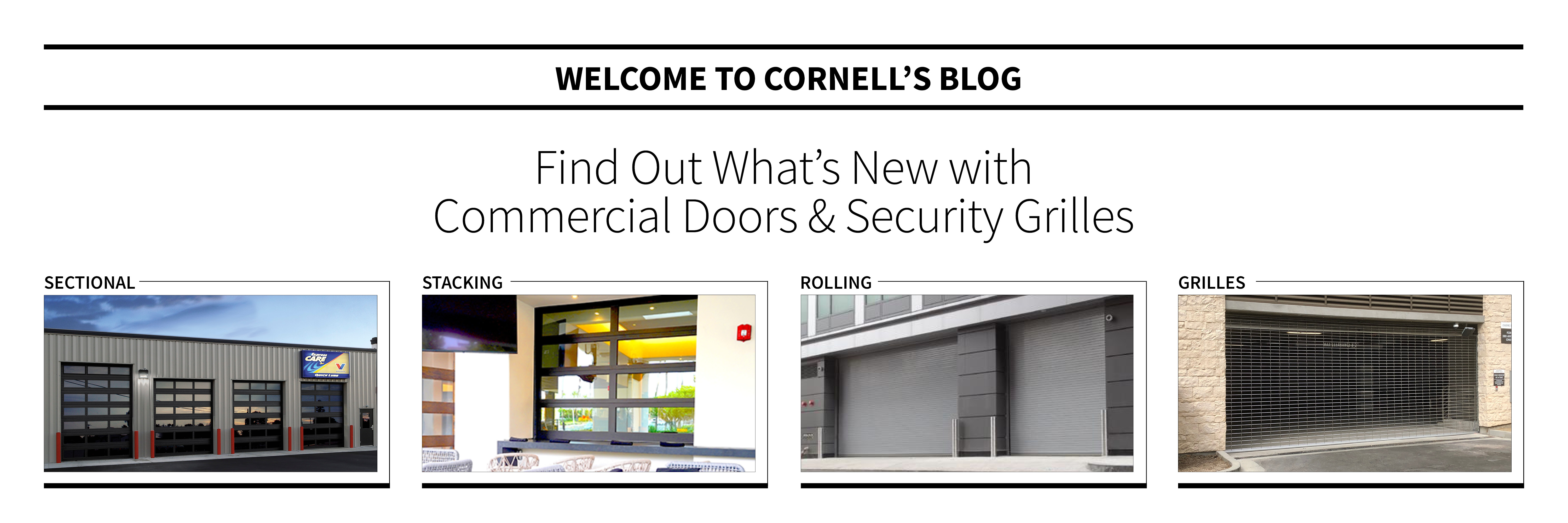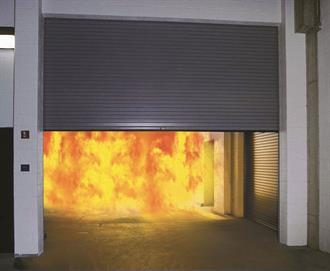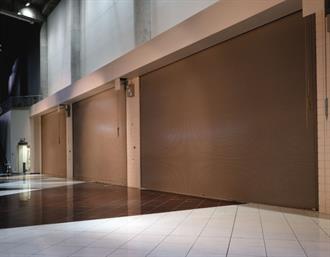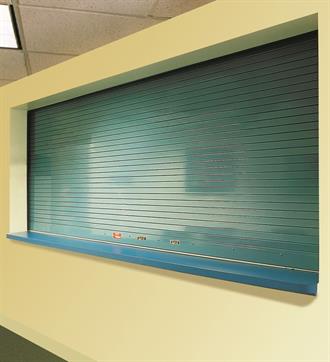

Cornell Commercial Rolling Doors and Security Grilles Blog
When it comes to Overhead Rolling Doors and Grilles, we are the experts in innovative door solutions!
Subscribe
Get updates on new blog posts to your inbox!
Annual Fire Door Evaluation & Drop Test | Cornell Iron

A rolling fire door must be maintained to be in a continuous and reliable state of readiness to secure a rated wall opening when activated for the purpose of protecting life and property from the spread of fire and/ or smoke throughout a building. Fire rated doors are used to compartmentalize a building into zones and are labeled ‘passive’ fire protection. For this reason, The National Fire Protection Association Publication 80, (NFPA) 80 mandates an annual fire door evaluation and drop test.
The three elements are - Inspection, Operation and Drop Test/ Reset.

- Inspection: The fire door is visually inspected for any damage, missing or broken parts. Labels that are not clearly visible must be made to be visible and painted or coated cables and fusible links must be replaced. Conditions that could affect the operation of the fire door should be noted. If the door does not pass the visual inspection, it may be failed. For additional information about this process, please refer to DASMA Technical Data Sheet # 270 (Recommended Rolling Door Maintenance Practice? And TDS # 271 (Rolling Steel Fire Doors, Drop Testing and Annual Follow-Up).
- Operation: The fire door must be opened and closed using normal operations, either electrical or manual means. If you find the fire door is not properly balanced or there are conditions that prevent the door from closing properly when activated, the door will fail the test. All missing parts must be replaced and repairs must be made prior to performing the drop test.
- Drop Test/ Reset: A drop test is performed to confirm that the fire door will close automatically during a fire emergency. It is recommended to use the drop test instructions that are provided by the manufacturer of the door. It is required that the fire door is activated to drop by all means of activation.It must be dropped and reset a minimum of two times per NFPA 80 section 5.2.3.7.3.1 to ensure that the door is working properly. The technician must also time the closing of the door to ensure that the average closing speed is between 6” and 24”. Remember, before performing the second drop test, the door must be completely reset per the manufacturer’s instructions. Once the second drop test is performed, the door can be reset so it is ready for real life operation.

To ensure that you choose a qualified person, typically a trained fire door systems technician, we recommend:
- Asking direct questions about International Door Association seminar attendance, continuing education, IDEA certifications, or other affiliations to determine their depth of expertise.
- Ask for references from satisfied customers.
- Ask if they follow NFPA procedures for evaluation and testing. Request a copy of their procedures in advance.
- Ask if they have access to replacement parts from the manufacturer of your doors.
In conclusion, it is the owner’s responsibility to have his fire rated doors and shutters inspected and drop tested annually. The record of testing, performed by a qualified person, must be kept on file for examination by the Authority Having Jurisdiction (AHJ) for a minimum of three years.

Cornell is the industry leading rolling door, security grille and closure product experts since 1828. To inquire how Cornell's long history of innovation and customer service can help you with your next rolling door project, call 1-800-233-8366!





